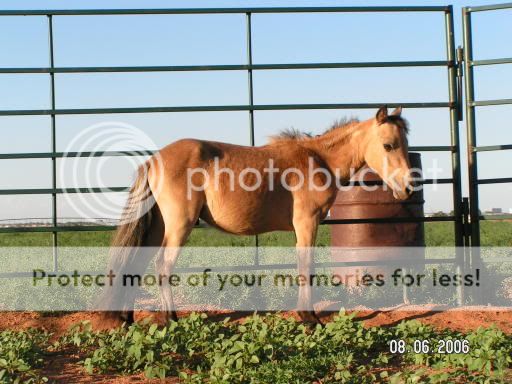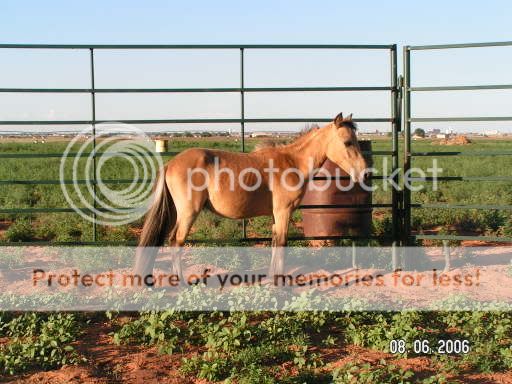I agree with those who have said that this colt is in pretty poor weight and condition. I would go through all of the possibilities-teeth, worming needs(i.e., how long has he been on a 'regular' deworming program, what kind/type of dewormer(s) has he been given, how has the dosage been determined, has he had dewormings aimed at tapeworms, and/or encysted small strongyles(remembering, NO Quest brand, as there are other, safer-for-minis, and more effective, ways to deworm for those)-first.Though his ribs are visible, he appears to have a bit of a belly--which 'could be' the poor quality hay you alluded to, but could also be due to worms, and/or just to a generally poor nutritional situation. I would make sure this colt was getting a (concentrate)feed formulated to provide the protein and other nutrients needed by a young and growing horses-AND make sure that he is also getting an adequate amount of the right kind of fiber-I have heard good things about Chaffhaye, but am not sure how suitable it is for young stock? If you use pellets, be careful of the possibility of choke; soaking of pelleted 'hay' might be a good idea. As for exercise, I would likely just take him for walks until he has improved in overall condition, then perhaps start a gradually more vigorous exercise program-but NOT in a round pen, unless the pen is quite large, the footing is NOT deep, and the session is very limited in time(as in, not over 10 min., and not but about twice a week....).
I also agree that any sort of 'serious' conformational critique is not really possible with a horse in such condition. However, I do see that he has a short hip, a straight shoulder, and what we oldtimers called an 'upside-down', or ewe, neck-the neck may well improve in appearance with better weight and condition; the hip and shoulder angles, though, will not change. Can't really tell much beyond that, currently.
I applaud you for coming here for opinions and ideas.
Margo































